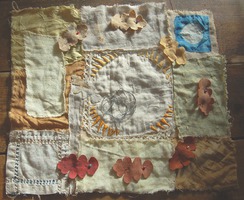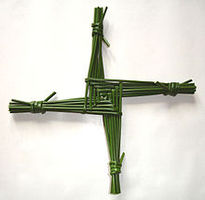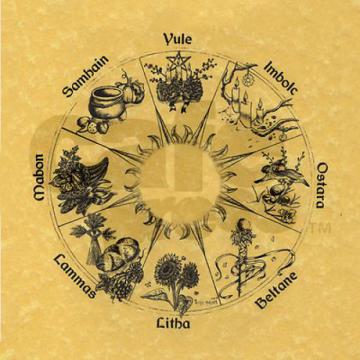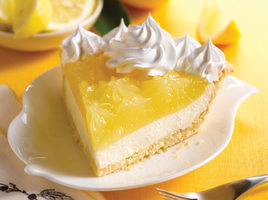
Imbolgc, in early Febuary, marks the promise of Spring. Each day the light lingers a little longer, and below the ground green shoots peek from bulbs, ready to seek the sun and bring the blooms of Spring. At this time, our thoughts turn to love, our hearts filling with warmth as we seek union with others.
ABOUT IMBOLC
Imbolc, also known as Imbolg (“in the belly”), or Olmelc (“ewe’s milk”) – referring to the time of year when ewes, heavy with pregnancy, would begin to lactate in preparation for the impending births
of their lambs, a time that heralded the return of Spring and all the life it brought with it out the dark, cold winter. Originating in the Northern Hemisphere, Imbolc is celebrated on 1 February (we
celebrate on 1 August in the Southern Hemisphere), roughly halfway between the Winter Solstice and Spring Equinox. Throughout the British Isles, February was a harsh, bitter month for the rural folk
to survive. In Scotland, this time was called “Faoilleach” – the Wolf Month, and also “Marbh mhio`s” – the Dead Month. But it was at this
most trying time that the first small, undeniable signs of new life would begin to appear. Lambs would be born, soft rains encouraging the growth of new green grass shoots, Blackthorns and crocuses
would blossom, ravens would begin to build their nests, and the clear voices of the larks could be heard calling across the snow laden fields. In Ireland, the farmers would now begin to prepare the
land for new seed, while fishermen began to look forward to the end of the winter storms and rough sea conditions to launch their boats again.
While the Horned God, who reined over Autumn and Winter, still held power, The Old Woman of Winter, Cailleach, as she was known in Scotland, was reborn as Bride (Brigid the Light-Bringer, Bright One,
Brighid, Brid) – Young Maiden of Spring, fragile, yet growing with strength each day as the sun warmed. She was honoured as the Goddess of healing and fertility, fire, keeper of the sacred flame, and
guardian of home & hearth. In another version in which the God was reborn at Yule, and the Goddess was Crone, sees the Goddess as mother to the God at Imbolc, feeding him from her own body as the
energy of Spring builds.
This festival was central to hearth and home – a celebration involving lighting the hearth fires and bringing out the last of the special foods, like butter and milk, that had been eked out through
the hard winter months. Fires – lighting candles, hearths and bonfires, were very symbolic at this time – both in the sense of encouraging the return of the sun’s warmth and increasing power, and in
the sense of purification for the new cycle ahead. With winter stores running low, it was important to the people who lived off the land to ensure a good season ahead and a steady supply of food. The
Imbolc rituals were performed to bring in this divine energy.
So how does this translate into our modern times? As Pagans, we strive to rekindle our connection with the land, the changing of the seasons – learning to live back in rhythm with natural life. So at
this time, we would apply the same philosophies and symbolisms (think on all four planes – physical, mental, emotional and spiritual) – in terms of welcoming back the beginning of Spring, purifying
ourselves and our space, perhaps going through the kitchen larder, having a feast with loved ones, lighting candles / a fire, and generally preparing to come out of “winter hibernation”. What seeds
will you be planting for the season ahead? What would you like to call energy into as the Sun slowly builds in power and warmth?
.jpg)
NAMES / KNOWN AS:
Imbolc or Imbolg (Celtic), Olmelc, also called Brighid’s Day or St Brighid’s Day (Irish: Lá Fhéile
Bríde, Scottish Gaelic: Là Fhèill Brìghde, Manx: Laa’l Breeshey), Imbolgc Brigantia (Caledonni), Disting (Teutonic – but celebrated 14 February), Lupercus (Strega), St
Bridget’s Day (Christian), Candlelaria (Mexican), the Snowdrop Festival, The Festival of Lights, Feast of the Virgin.
Note: Origin of Candlemas
When Ireland converted to Christianity, the Catholic Church attempted to replace the pagan Imbolc
festival with one dedicated to the Virgin Mary on the second day of the month, a feast of purification of the Virgin. By Jewish law, it took 40 days after the birth of a woman to be cleansed
following the birth of a son. Thus, 40 days after Mary’s birth of Jesus (Christmas), brought the date to 2 February. It was called “Lá Fhéile Muire na gCoinneal” (feast day of Mary of the
Candles), which later was translated in English to Candlemas. They also allowed the Goddess Brigid to become a saint, and St Brigid’s Day was established.
KEYWORDS/THEMES
Return of the light, renewal of the Maiden, start of Spring, increasing the light, hearth fire, creative fire, healing fire, women and the Goddess,
purification, purity, growth, reunion of Goddess and God, renewal of maidenhood, renewal of the land, waking of the earth, returning to work on the land after the winter lull, renewal of fertility,
letting go of the old and making way for the new.
ENERGY
Waxing
DATES
February 2nd (Northern hemisphere)
ASSOCIATED GODS
Gods of Love and Fertility, the Horned God, Aengus Og, Eros, Februus
ASSOCIATED GODDESSES
All Virgin/Maiden Goddesses – especially Brigid. Aradia, Athena, Inanna, Gaia, Februa
Below are more correspondences for the Imbolc festival. Use these for inspiration rather than hard and fast rules. You can choose to mark the change in season however you want – ultimately it is
about your connection with nature, so do what resonates with you and your loved ones.
PLANTS, FLOWERS, HERBS, INCENSE
Angelica, Basil, Bay Laurel, Cinnamon, Coltsfoot, Heather, Iris, Myrrh, Tansy, Vanilla, Violet, Wisteria
CRYSTALS
Amethyst, Bloodstone, Garnet, Ruby, Onyx, Turquoise
COLOURS
White, yellow, pink, red, green, brown
FOOD
Pumpkin seeds, sunflower seeds, poppyseed cakes, muffins, scones, breads, dairy products, peppers, onions, garlic, raisins, soups, spiced wines, herbal teas
IMBOLC ALTAR/DECORATIONS
Besoms
White and yellow flowers
Candle wheels
Brigid’s Crosses
Acorn-tipped wands
Ploughs
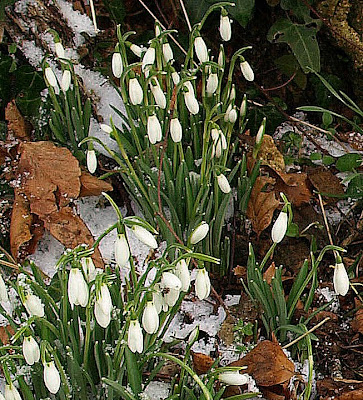
On midwinter’s eve (Imbolc) place a piece of linen or cloth outside. It is said that on this night Brigid travels all over the land and if she sees this cloth she will bless it
and give it healing powers with this prayer: Let the cloth of life be mended. Let the thread be linked again, restored, cleansed - the forests growing, native plants in field and fen. Let the cloth
of life, in beauty, be restored by will to be. People with the plants and creatures, tending earth and sky and sea.
A Saint Brigid's cross, which honors Saint Brigid of Ireland, is made from interwoven pieces of straw, reeds, or rushes which are the traditional material. These simple, homemade crosses are traditionally hung over the door or in the rafters of the home to protect the dwelling from harm. Saint Brigid's crosses are quite easy to make by hand and require just a few supplies.
THE WHEEL OF THE YEAR
The wheel of the year is turning toward light, the sun gaining strength through the lengthening days. The festival of Imbolc, in early Febuary, marks the birth of lambs, the thawing of streams, and
the first stirrings of Spring. Ostara, the Spring Equinox, marks the moment of balance between light and dark, as the sun prevails and light and life return.
Imbloc: Candlelight Lemon Dessert
1 cup flour
1/2 cup butter
1/2 cup finely chopped walnuts or hazelnuts
2 cups frozen non-dairy whipped cream topping, divided
1 cup powdered sugar
8 oz. cream cheese, softened
6 oz. instant lemon pudding mix
3 cups whole milk
Imbolc is all about the soft light of Spring encroaching on Winter's darkness. With this soft, lemony dessert, you'll feel the glow while the lemon taste awakens your Spring senses.
Several hours before serving: Combine flour, butter, and chopped nuts. Press into a 9 X 13 glass pan. Bake for 15 minutes at 350 degrees F; cool.
Combine 1 cup of the whipped topping, powdered sugar, cream cheese, and a dash of salt. Spread over the cooled crust. Chill for 15 minutes.
Combine the pudding mixes and milk; beat for about 2 minutes. Pour over the chilled mixture in pan. Chill for 30 minutes. top with the extra 1 cup of whipped topping. Garnish with nuts or thin lemon
slices as desired.
Cover tightly and chill several hours before serving. Garnish {optional}.




